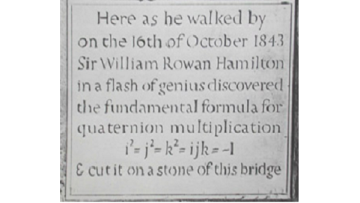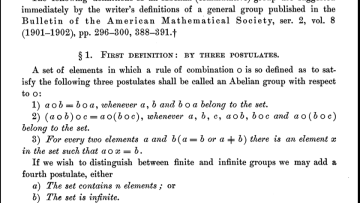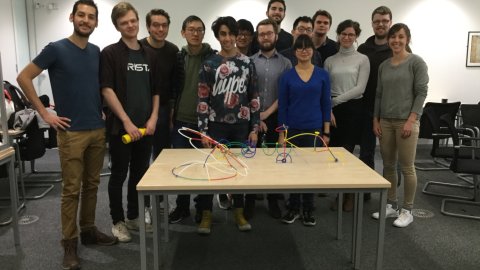The role of waves on turbulent dissipation and mixing in geophysical flows
Abstract
In the Boussinesq framework, velocity couples to density fluctuations whereas in magnetohydrodynamic turbulence, the velocity field is coupled to the magnetic field. Both systems support waves (inertia-gravity in the presence of rotation, or Alfvén), with anisotropic dispersion relations. What kind of turbulence regimes result from the interactions between waves and nonlinear eddies in such flows? And what is delimiting these regimes?
I shall sketch the phenomenological framework for rotating stratified turbulence within which one is led to scaling laws in terms of the Froude number, Fr=U/[LN], which measures the relative celerity of gravity waves and nonlinear eddies, with U and L characteristic velocity and length scale, and N the Brunt-V\"ais\"al\"a frequency. These laws apply to the mixing efficiency of such flows, indicating the relative roles of the buoyancy flux due to the waves, and of the measured kinetic and potential energy dissipation rates. Various measures of mixing are found to follow power laws in terms of the Froude number, and may differ for the three regimes that can be identified, namely the wave-dominated, wave-eddy balance and eddy-dominated domains [1]. In particular, in the intermediate regime, the effective dissipation varies linearly with Fr, in agreement with simple wave-turbulence arguments. This analysis is inspired by and corroborates results from a large parametric study using direct numerical simulations (DNS) on grids of 1024^3 points, as well as from atmospheric and oceanic observations.
Such scaling laws can be related to previous DNS results concerning the existence for the energy of bi-directional constant-flux cascades to both the small scales and to the large scales, due to the presence of rotation in such flows, as measured for example in the ocean. These dual energy cascades lead to an alteration, and a decrease, of the mixing and available energy to be dissipated in the small scales [2]. Some perspectives might also be given at the end of the talk.
[1] A. Pouquet, D. Rosenberg, R. Marino & C. Herbert, Scaling laws for mixing and dissipation in unforced rotating stratified turbulence. J. Fluid Mechanics 844, 519, 2018.
[2] R. Marino, A. Pouquet & D. Rosenberg, Resolving the paradox of oceanic large-scale balance and small-scale mixing. Physical Review Letters 114, 114504, 2015.
12:45
Supersymmetric partition functions on Seifert manifolds from line defects
Abstract
As we have learned over the last 10 years, many exact results for various observables in three-dimensional N=2 supersymmetric theories can be extracted from the computation of "supersymmetric partition functions" on curved three-manifold M_3, for instance on M_3= S^3 the three-sphere. Typically, such computations must be carried anew for each M_3 one might want to consider, and the technical difficulties mounts as the topology of M_3 gets more involved. In this talk, I will explain a different approach that allows us to compute the partition function on "almost" any half-BPS geometry. The basic idea is to relate different topologies by the insertion of certain half-BPS line defects, the "geometry-changing line operators." I will also explain how our formalism can be related to the Beem-Dimofte-Pasquetti holomorphic blocks. [Talk based on a paper to appear in a week, with Heeyeon Kim and Brian Willett.]
Oxford Mathematician Heather Harrington has been awarded a Whitehead Prize by the London Mathematical Society (LMS) for her outstanding contributions to mathematical biology which have generated new biological insights using novel applications of topological and algebraic techniques.
Oxford Mathematician Karin Erdmann specializes in the areas of algebra known as representation theory (especially modular representation theory) and homological algebra (especially Hochschild cohomology). Here she discusses her latest work.
At the beginning of the twentieth century, some minor algebraic investigations grabbed the interest of a small group of American mathematicians. The problems they worked on had little impact at the time, but they may nevertheless have had a subtle effect on the way in which mathematics has been taught over the past century.
Minimal switches and clocks
Abstract
Switch-like and oscillatory dynamical systems are widely observed in biology. We investigate the simplest biological switch that is composed of a single molecule that can be autocatalytically converted between two opposing activity forms. We test how this simple network can keep its switching behaviour under perturbations in the system. We show that this molecule can work as a robust bistable system, even for alterations in the reactions that drive the switching between various conformations. We propose that this single molecule system could work as a primitive biological sensor and show by steady state analysis of a mathematical model of the system that it could switch between possible states for changes in environmental signals. Particularly, we show that a single molecule phosphorylation-dephosphorylation switch could work as a nucleotide or energy sensor. We also notice that a given set of reductions in the reaction network can lead to the emergence of oscillatory behaviour. We propose that evolution could have converted this switch into a single molecule oscillator, which could have been used as a primitive timekeeper. I will discuss how the structure of the simplest known circadian clock regulatory system, found in cyanobacteria, resembles the proposed single molecule oscillator. Besides, we speculate if such minimal systems could have existed in an RNA world. I will also present how the regulatory network of the cell cycle could have emerged from this system and what are the consequences of this possible evolution from a single antagonistic kinase-phosphatase network.






